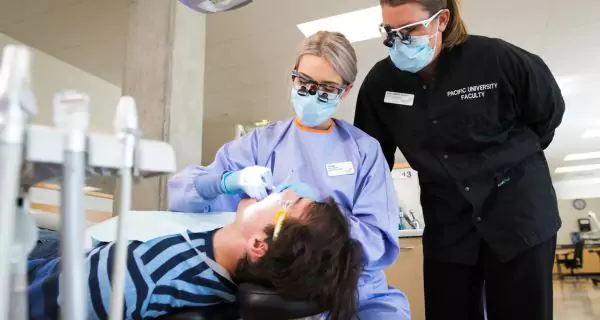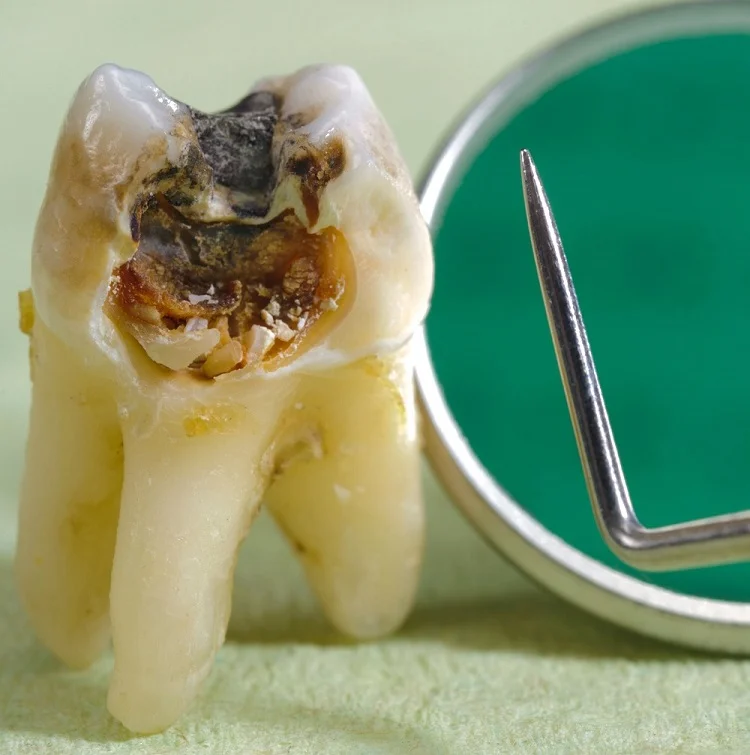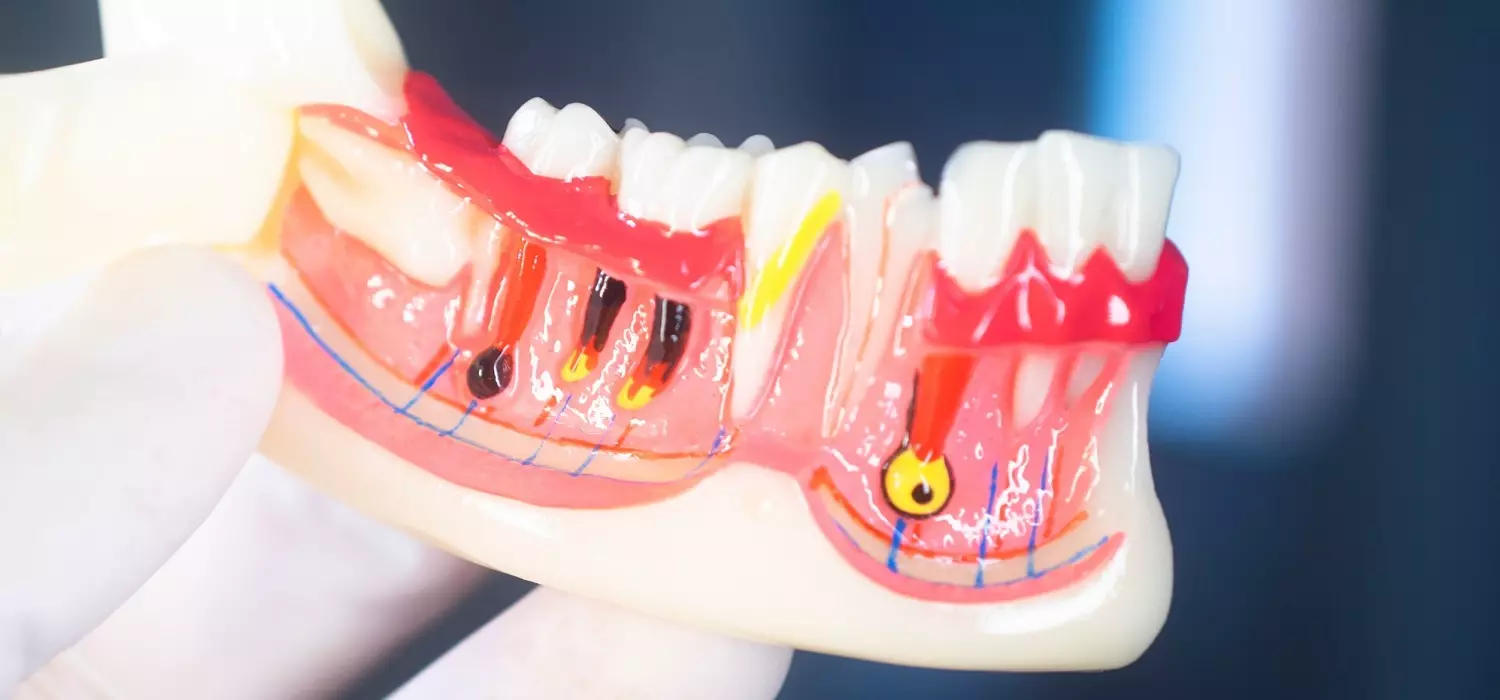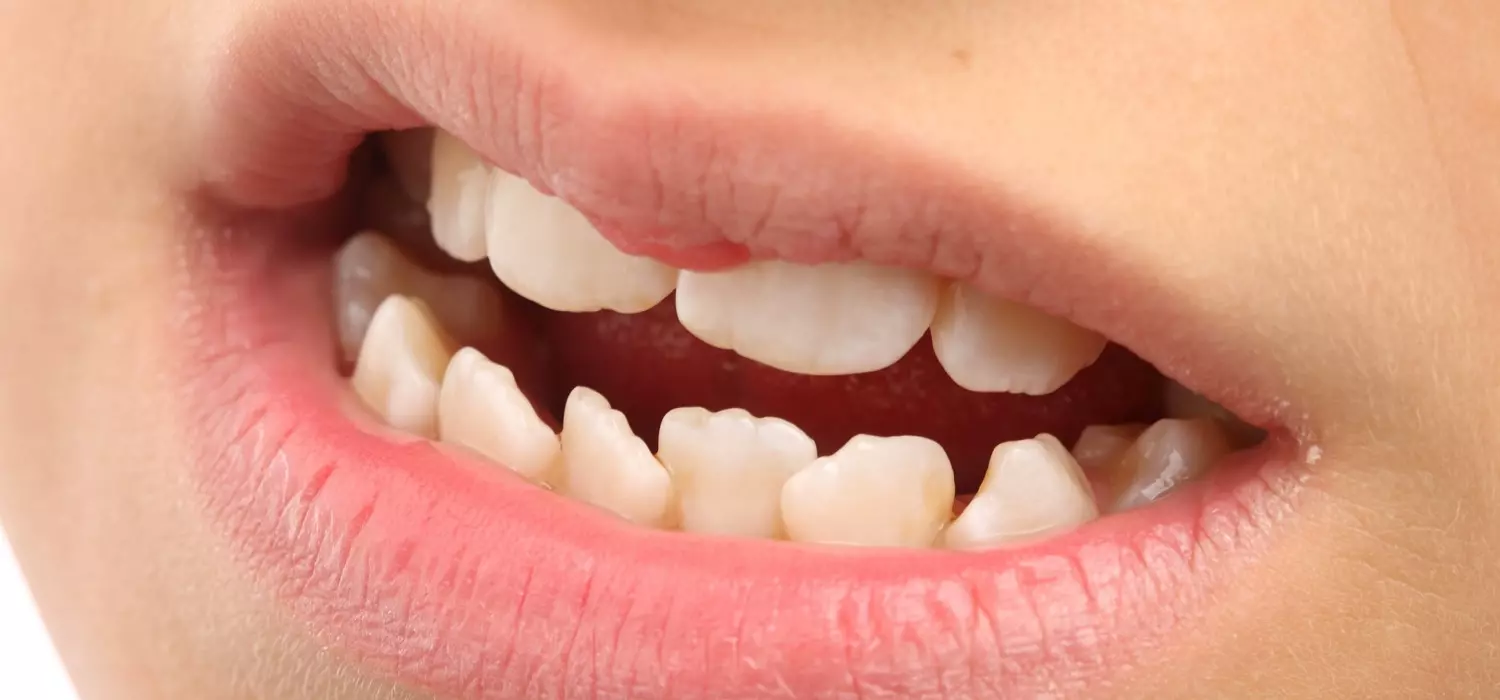Last Updated on: 10th December 2025, 06:09 am
Internal tooth resorption, also known as root resorption, is a rare dental lesion that affects one or multiple parts of the tooth. Typically, it starts on the outer part of the tooth and spreads towards the inside of the tooth. It is a generally asymptomatic oral health condition that is detected in advanced stages.
Internal resorption is a normal process in baby teeth as part of their development and growth toward permanent teeth. In adults, it is a sign of a dental lesion or dental resorption that can cause other damages, including tooth loss if immediate treatment is not received.
Root resorption is the progressive destruction of dentin, with its corresponding traumatic effects and infection. This pathology affects the inside of the tooth and is more common in individuals aged 21 to 30 years. It is also a common diagnosis in people who have undergone orthodontic procedures or complex surgical interventions such as tooth transplantation.
This article provides information on the causes, symptoms, prevention, diagnosis, and treatment of internal tooth resorption.
Which Parts of the Tooth does Internal Resorption Affect?
The parts of the tooth that are affected by internal resorption are:
• Inner pulp
• Cementum that covers the root
• Dentine, the tissue beneath the enamel
• Root
Root resorption can cause infections, twisted teeth, tooth loss, and other situations that affect teeth, gums, and the jaw.
Internal tooth resorption can lead to different lesions that affect oral health, such as:
• Chipped teeth
• Discoloration of teeth
• Loose teeth
• Infections
• Loss of teeth
• Recession of the roots
What are the Causes of Internal Tooth Resorption?
Internal tooth resorption can be caused by various factors.
Often, root resorption results from physical injury to a tooth or inflammation inside the tooth due to an untreated cavity. It can also be a subsequent effect of a previous dental procedure that affected the compromised tooth.
Prolonged use of orthodontic devices, chronic teeth grinding, or frequent whitening can also cause internal tooth resorption.
In people who have received orthodontic treatment, resorption is more relevant in the upper and lower incisor teeth.
What are the Symptoms of Internal Tooth Resorption?
Internal resorption is generally asymptomatic and is detected when it is in an advanced state, causing decomposition of the tooth from the outside inwards. Some warning signs include:
1. Holes in the teeth.
2. Dark or pinkish discoloration of the teeth.
3. Loose teeth
4. Teeth that easily chip.
5. Pain in the root, crown, or inside a tooth.
6. Abnormal spacing between teeth.
7. Inflammation and redness of the gums.
How is Internal Tooth Resorption Diagnosed?
The method for diagnosing resorption depends on the part of the tooth that is affected, and in this process, it is essential to know the person’s medical history, such as traumas, crown interventions, pulp treatments, orthodontic procedures, whitening, surgical interventions near the roots, or periodontal disease can be related to the process of root resorption.
An alternative for diagnosing resorption is a physical examination, aimed at observing color changes in the tooth’s crown, performing percussion tests, mobility, and sensitivity tests by contrast (heat/cold).
Dark spots on the teeth, characteristic of internal resorption, become visible in an X-ray, a diagnostic tool that allows identifying the impact of the lesion, as well as other damages that may have occurred. Other diagnostic methods are computed tomography and optical microscopy.
What is the Treatment for Internal Tooth Resorption?
The therapeutic approach is determined by the part of the tooth that has been affected and the impact.
Generally, the treatment of internal absorption focuses on preserving the parts of the tooth that have not yet been affected by the pathological process. This requires removing the damaged parts to prevent resorption from continuing.
Frequently, the therapeutic procedure is endodontic and is oriented toward root canal treatment, crown, or gum surgery, depending on the case’s condition. Tooth extraction is the last resort.
The endodontic procedure is the initial therapeutic approach; the pulp and other tissues that cause the lesion are removed, and the remaining tissue that has not yet been affected is maintained. Resorption affects the appearance of the teeth. To recover the dental piece’s appearance, it is possible to resort to implants or veneers.
How to Prevent Internal Tooth Resorption?
Here are some recommendations for preventing root resorption:
1. Regularly visit the dentist. This will facilitate early diagnosis and application of the required treatment to prevent the situation from advancing to more complex conditions.
2. Maintain good oral hygiene habits: dental brushing with fluoride toothpaste and flossing.
3. Avoid applying additional/constant force on the teeth.
4. Avoid teeth grinding.
The Importance of Early Diagnosis
Knowing a timely diagnosis is an opportunity to act in time in the early stage of resorption. To detect any changes, it is essential to regularly consult the dentist. It is a gain for your well-being and your oral health.
Being aware of the changes that occur in the space between the teeth and variations in the tone of the gums is an alert that allows for avoiding the advancement of this oral health condition.
Frequently Asked Questions
How do you fix internal tooth resorption?
The therapeutic approach for internal resorption depends on the affected part of the tooth and its impact. Treatment usually aims to preserve unaffected areas by removing damaged parts to stop further resorption. Often, this involves endodontic procedures like root canal treatment, crown or gum surgery. Tooth extraction is considered a last resort.
Can you save a tooth with internal resorption?
Yes, it can be saved by eliminating the affected part and preventing it from reaching the healthy areas. Knowing a timely diagnosis is an opportunity to act in time in the early stage of resorption. To detect any changes, it is essential to regularly consult the dentist. It is a gain for your well-being and your oral health.
What is the main cause of internal resorption of teeth?
Root resorption often stems from physical injury or inflammation inside a tooth due to an untreated cavity and can result from previous dental procedures. Prolonged use of orthodontic devices, chronic teeth grinding, or frequent whitening can also cause internal tooth resorption, with the upper and lower incisors being more commonly affected in individuals who have received orthodontic treatment.
What happens if internal tooth resorption is left untreated?
Complications from resorption are frequent and can lead to permanent tooth loss if not addressed swiftly. Be vigilant about any alterations in the spacing between your teeth, along with any unusual pain or changes in the appearance of your teeth and gums, as these may be early indicators.
Do the permanent retainers cause root resorption?
Root resorption can arise from numerous causes, such as genetics, trauma, orthodontic treatment, and other factors. However, the evidence on whether permanent retainers specifically lead to root resorption is not conclusive. Some research indicates a slightly elevated risk of root resorption linked to orthodontic treatments in general, including retainers, but this risk is generally considered to be low.
Share:
References
1. Cirino Erica (May 29, 2019) What Is Dental Resorption? / https://www.healthline.com/health/dental-and-oral-health/resorption
2. Fang-Chi Li, Wei-Chiang Hung (September 206) Repair of a perforating internal resorption: two case reports / https://www.sciencedirect.com/science/article/abs/pii/0030422072903969
3. González Martínez Farith, Robles Guiza Vicente, Rivero Fuentes Leidys, Palis Martelo María Margarita, Pulido Ramos Jhonny (September 2012) Inflammatory root resorption in subjects undergoing orthodontic treatment. Cartagena (Colombia) / https://www.redalyc.org/pdf/817/81724961004.pdf
4. Haueisen Helga, Heidemann Detlef (April 5, 2012) Are resorptions a rarity in endodontics / https://www.elsevier.es/es-revista-quintessence-9-articulo-son-reabsorciones-una-rareza-endodoncia-S0214098512000608
5. J Conserv Dent (November 2014). “Internal root resorption: An endodontic challenge: A case series / https://www.ncbi.nlm.nih.gov/pmc/articles/PMC4252938/
6. Martínez Lozano MA, Forner Navarro L, Sánchez Cortés JL (January 2003) Clinical considerations on external root resorption due to tooth impaction / https://scielo.isciii.es/scielo.php?script=sci_arttext&pid=S0213-12852003000100004
7. Segovia Ramírez Alberto, Sánchez Lara Roberto (March 2005) Internal dentinal resorption. Report of a case / https://www.medigraphic.com/pdfs/adm/od-2005/od052e.pdf
-
Nayibe Cubillos M. [Author]
Pharmaceutical Chemestry |Pharmaceutical Process Management | Pharmaceutical Care | Pharmaceutical Services Audit | Pharmaceutical Services Process Consulting | Content Project Manager | SEO Knowledge | Content Writer | Leadership | Scrum Master
View all posts
A healthcare writer with a solid background in pharmaceutical chemistry and a thorough understanding of Colombian regulatory processes and comprehensive sector management, she has significant experience coordinating and leading multidisciplina...





















